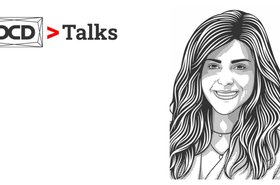In the latest edition of DCD>Talks, our own Emma Brookes speaks to Mariana Chatzopoulou, principal mechanical engineer at Cundall, a multidisciplinary engineering consultancy working throughout EMEA and APAC. As well as her main responsibilities, she also acts as zero-carbon design advocate for the critical systems group at the company.
This side of her role has seen her working to define the undefined within the new world of sustainability, and she warns of the dangers of leaving such things vague:
“Much of the construction industry is wrestling with a clear definition of what's truly in a zero building design, and it has yet to come up with a unified methodology of how to quantify it, and how to measure it. Of course, these loose definitions allow people to come up with their interpretations and definitions and use them more like a marketing vehicle instead of using them to make a positive impact on the carbon footprint of the industry.”
Which is a nicer way of saying “greenwashing.” Chatzopoulou believes that, just as charity begins at home, sustainability begins by example:
“What is key in our definition, or our approach for net-zero carbon building design, is that we aim to reduce our emissions first, we do that with the right site selection, design decision, equipment selection, and materials. We aim to minimize our emissions to technically feasible levels, and of course, financially viable, and only then start considering offsets to neutralize emissions.”
She goes on to remind us that although most businesses are starting to have a grip on operational carbon emissions, there’s still the more intangible embodied carbon to tackle:
“As we reduce our operational carbon, this is where embodied carbon now becomes dominant. But embodied carbon is a different beast. It's more difficult to quantify as it goes beyond the data center site boundary. There needs to be a broader understanding of the embodied carbon of these early emissions of the entire supply chain, which means we need to have means to measure that monitoring and be able to create benchmarks and then compare ourselves against those benchmarks and improve. There are people out there who want to get involved and do something about it. But the data is not there yet.”
With the need for change outpacing the lifecycle of the average data center – a byproduct of both environmental standards and increased AI workloads – compromises must be made in cooling, as Chatzopoulou explains:
“There are facilities out there already that might need to be retrofitted. There will be instances where we will have high-density racks installed in halls that have lower-density racks as well, and that will be the case for many years to come, we're not going to see a complete change from standard racks to high-performance racks overnight. So, data center operators will need to be able to handle the mix of high and low-density dress in the same environment.”
Meanwhile, the responsible data center should not just be looking to cool their chips, but to actively reuse heat: “Data centers can become part of a circular economy and give back to the community. We've seen already that we've designed data centers that are connected to heat networks.
"For example, one of our projects in Denmark hits 1,000s of homes in the nearby town by being connected to the district heating network. Also, in that region, we are seeing that the planners are asking for the data centers to be able to connect to a local heating network to get planning permission. It is a similar trend in the GLA here in London, where data centers need to be heat recovery ready.”
To learn more about how Cundall sees the future of data center construction, listen to the DCD>Talks podcast here.

